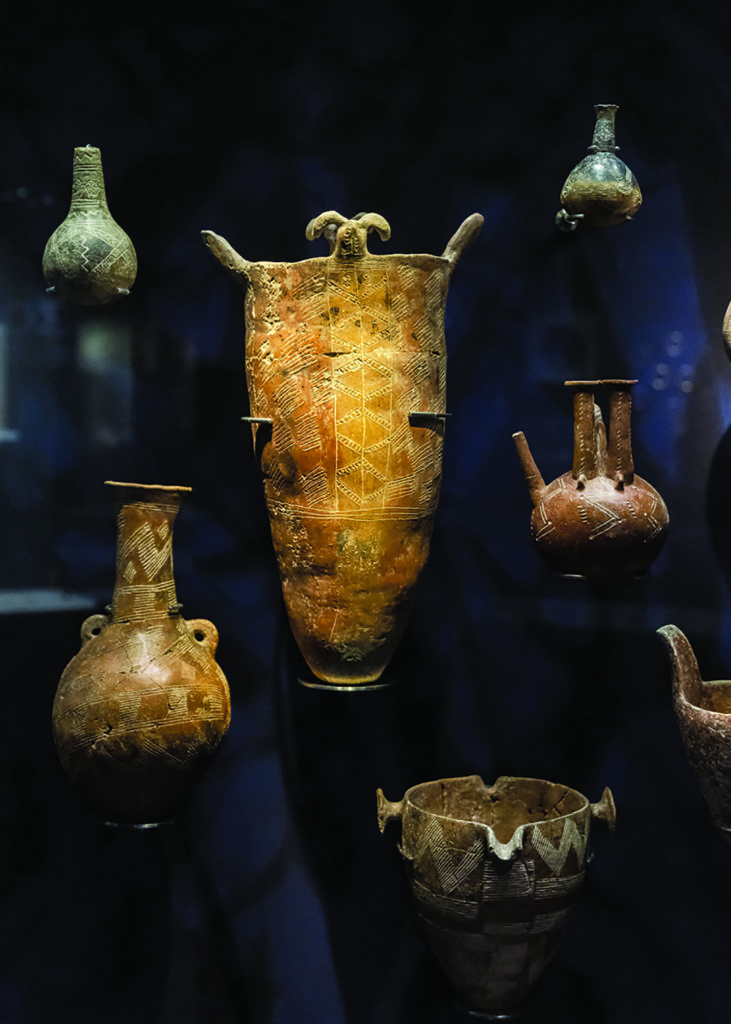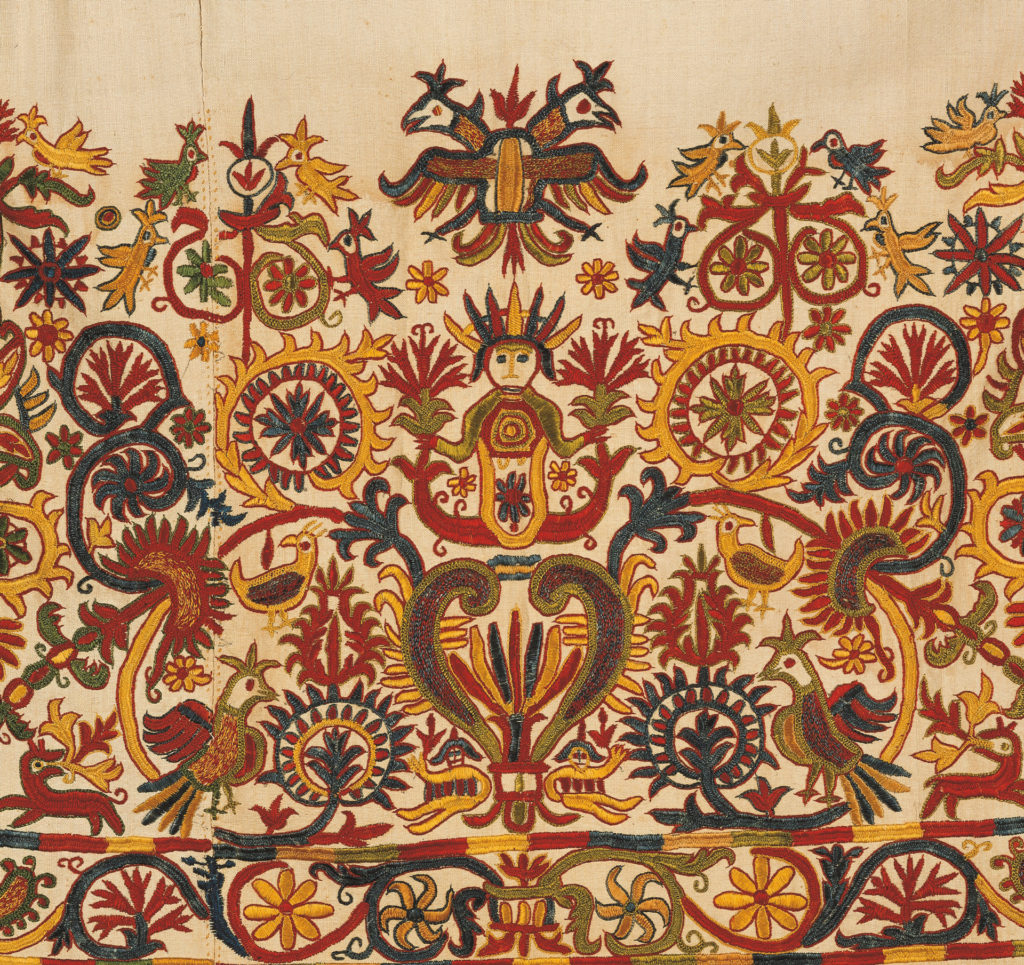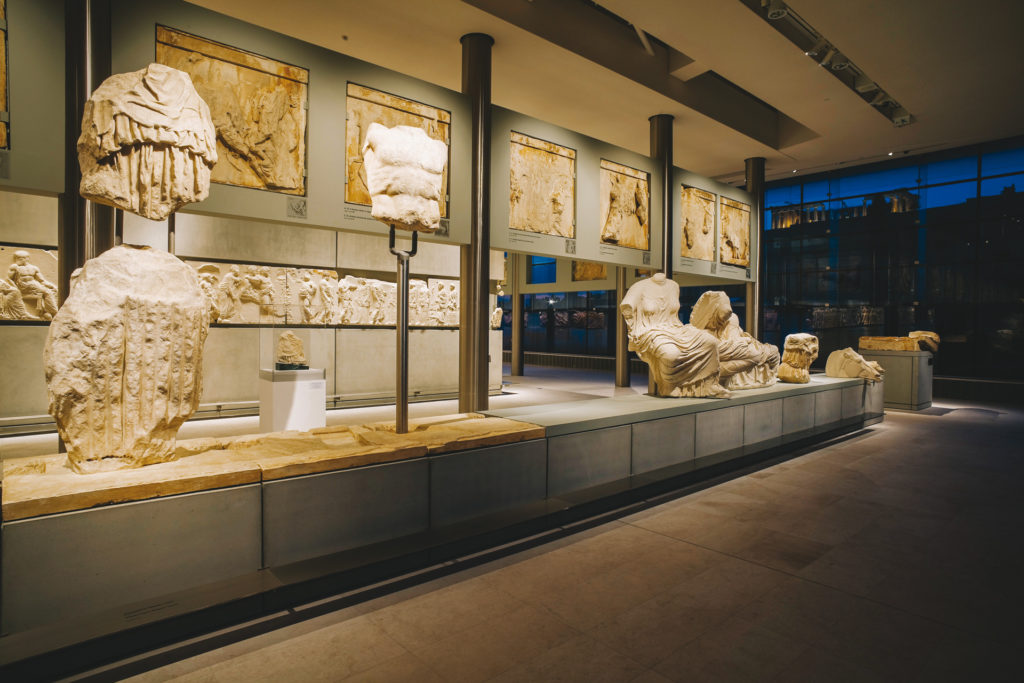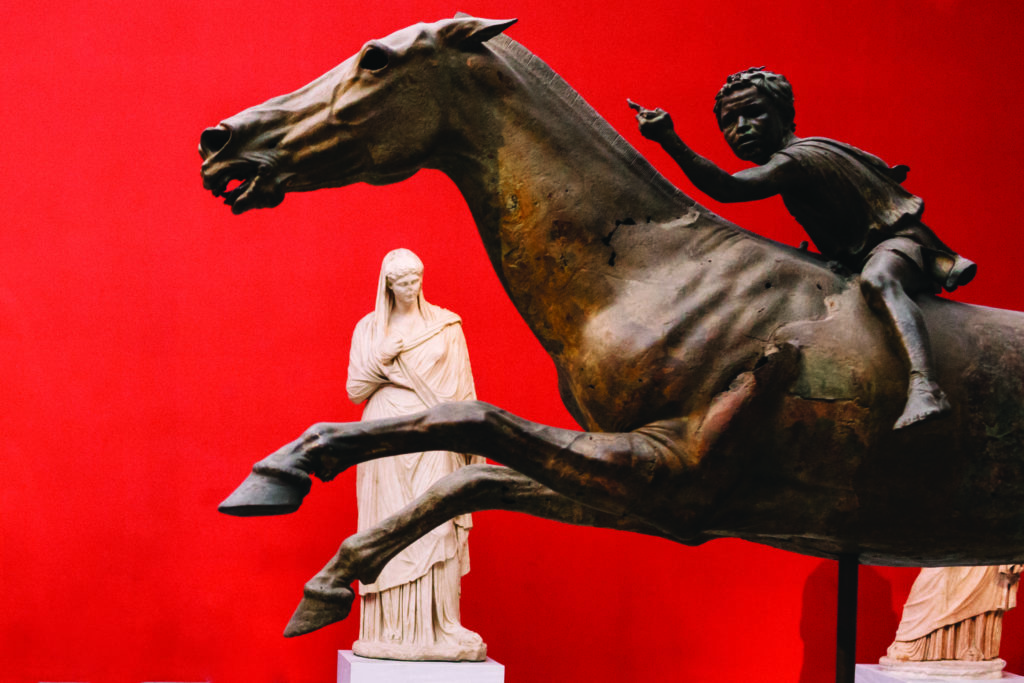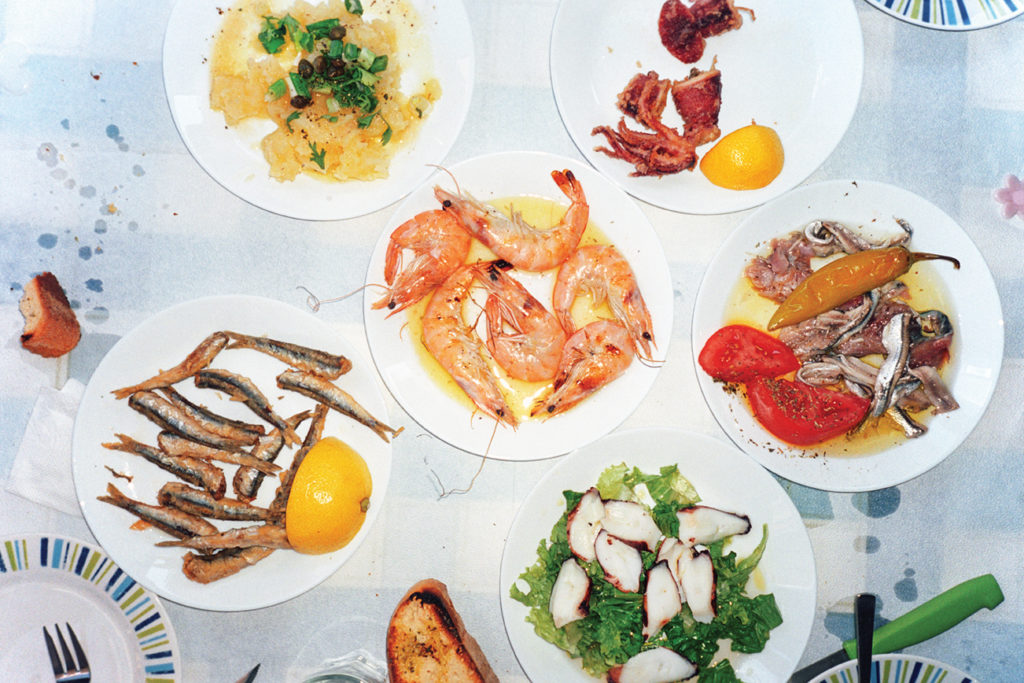Santorini is a lot of things. For tourists it’s that amazing view from the caldera at Imerovigli; for lovers the mesmerizing sunset at Oia; for foodies the creative gourmet restaurants, the fava beans and the non-irrigated field grown tomatoes. As for the wine lovers it’s the powerful Assyrtiko, the luscious Vinsanto and the robust Mavrotragano. These grapes will impress even the novices, as they represent the F1 of Greek vineyards. And of course, like all single- seaters, they owe their superiority to their chassis. And oh, what a chassis it is! Chiselled out of lava and basalt – the porous soil that retains moisture- and being free of any clay content, it offers a rather surreal environment for the vines while at the same time protecting Santorini from the invasion of phylloxera, the disease that destroyed most of Europe’s vineyards in the late 19th century.
Thus, while the vast majority of vines all over the world are grafted in phylloxera-resistant American rootstocks, Santorini’s vineyards are ungrafted, a fact that allows the vines to surpass a lifespan of 100 years! Go and add to that the lack of any organic material in the soil and you have the answer as to why the few bunches of these vines are packed with such superior characteristics.
Of course a very powerful engine is mandatory and this engine is built on Santorini’s unique varieties: the assertive Assyrtiko might be considered as the diva among the island’s grapes, yet the heavenly scented Aidani and the supple Athiri are equally as important. Santorini’s vineyard doesn’t only boast about white diamonds but of red rubies as well; the complex Mavrotragano and robust Mandilaria are leading the way in the increasingly desirable category of island’s dry reds.
As for the overheating issues that every single high-performance engine has to face, the solution comes in the form of the “kouloura” or “basket”; the unique pruning method in which the vine canes are woven into shrubby baskets with the leaves arranged on top and the grapes hidden in the centre. This way the valuable crop is shielded from the inhospitable and harsh Aegean environment of Santorini: the leaves provide shade from the scorching sun while the wreath offers protection from the fierce winds and captures the valuable morning dew, thus saving the required humidity for the development of healthy grapes.
Even if this method is dying off – due to the increased cost required and the lack of experienced vine dressers – giving way to the modern-type spur pruning, the “kouloura” technique remains an inextricable element of this unique landscape and the beauty of Santorini.
And from such a unique terroir one should expect nothing but unique wines. Here the production may be minuscule- since the poor soils result in ultra low yields of less than 40hl/ha- but its quality and character is just unsurpassed.
These virtues become apparent once you get the first sniff of a dry Santorini wine. If you’re used to fruity aromatic wines, you might even feel a tingle of disappointment. Don’t get me wrong, this doesn’t mean that Santorini wines lack of fruitiness: lemon, bitter orange and other citrus nuances are present but not as dominant as in the case of other whites. The actual star here is minerality, a common aspect among all truly great wines of the planet. Expressed as pebble, iodine, sulphur, smoke and flint, these are neither varietal’s nor “winery’s” aromas but they are originated from the uniqueness of a great land! And there are very few places on earth with such a blessed terroir.
The nose may be the sound of this state of art engine, but it is the taste that offers the thrilling experience of driving a F1 monster; every sip is like a dig in the accelerator that gives you a punch in the stomach while launches your enjoyment to the stratosphere. This tremendously rich taste is reinforced with a fresh and lemony acidity that never allows the wine to become feeble, while the prolonged finish and its slightly tannic aftertaste will stay with you for a good long while. The body may be full and the alcohol high yet there is always a terrific acidity that never allows the wine to become flabby, while the intense flavour and the slightly tannic aftertaste are conquering the brain.
However fierce the previous description may have seemed to you, it’s a fact that an oak- fermented and aged version of Assyrtiko will never let you down. Because it’s not only the smoky and nutty aromas that will be added to this unique bouquet, but a buttery roundness as well, which will eventually tame the wine’s aggressive character.
Alongside these classic dry versions of Santorini, there are some recently launched additions that increase the adrenaline, price and hype of local wines to sky-high levels: the single vineyard bottlings of Assyrtiko, the wine-making techniques that highlights the exotic side of Santorini, the cuvees from 100% Aidani or other rare varieties (such as Katsano), and of course the modern versions of the traditional Nychteri, a full bodied, alcoholic style of wine, which is the result of late-harvest, presence of residual sugar and long aging (mainly) in big old barrels.
Nychteri would easily be the nectar of gods if it weren’t for Vinsanto. A truly divine wine, produced from grapes that have been dried under the scorching Aegean sun. It takes approximately 10 days for the lava to draw the humidity out of these grapes, thus concentrating the juice that by this time is ready to be transformed, after aging for at least 3 years – into a sweet masterpiece of incomparable lusciousness and richness.
Similar wines made of sun-dried grapes can be found in several winemakin s condensed fortitude of Vinsanto that allowed many children to survive during the World War II, when it was administered as a stimulant, -while it still acts as an elixir on the lucky ones who have the chance to taste it.
Apart from the widely acclaimed white (dry and sweet) wines of the island, another category seems to be gaining the respect of the restless oenophiles: red wines are successfully overcoming the obstacle of the unbearable tannins and “burnt” aromas of the past and with the much-discussed Mavrotragano to lead the way, they impressively compliment the unique kaleidoscope of flavours and tastes that Santorini has to offer. That’s why the recognition and admiration expressed by the wine press, as well as the very high scores consistently given by the most influential wine writers come as no surprise for the gems of the island.
So, rev’ up with a Santorini and let the others eat your lava!



